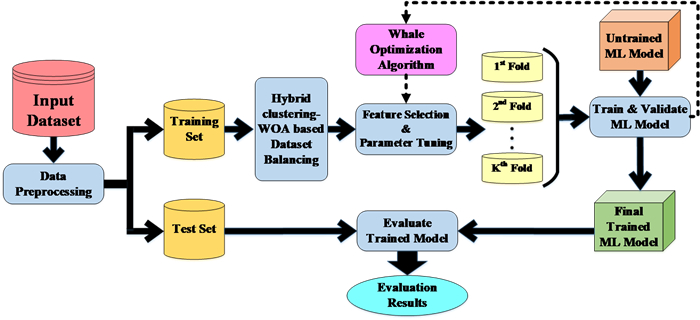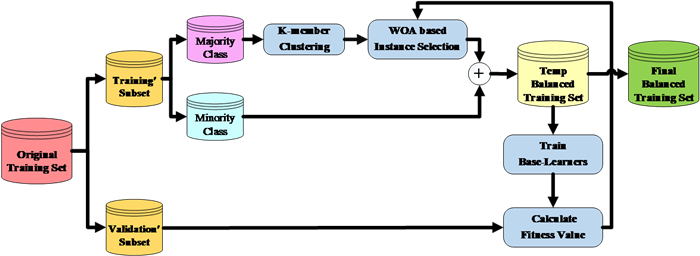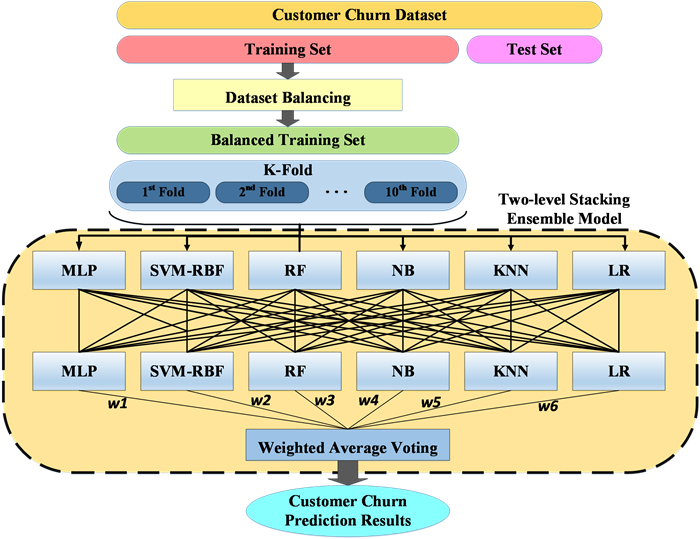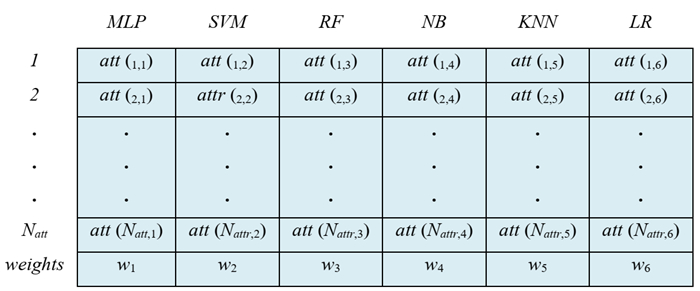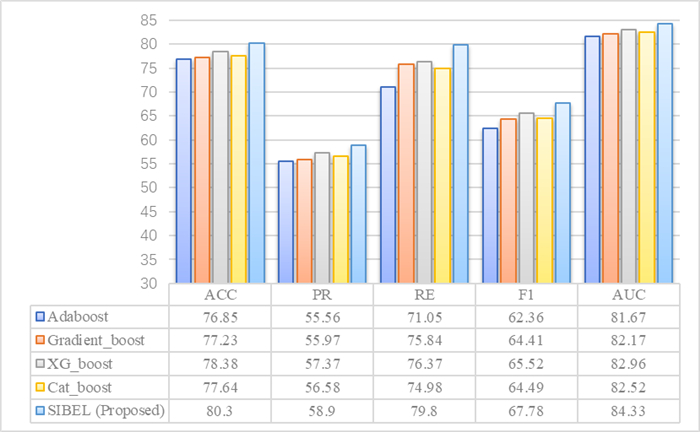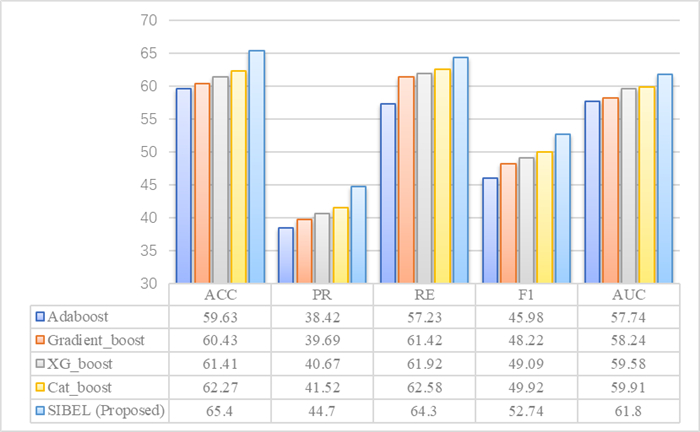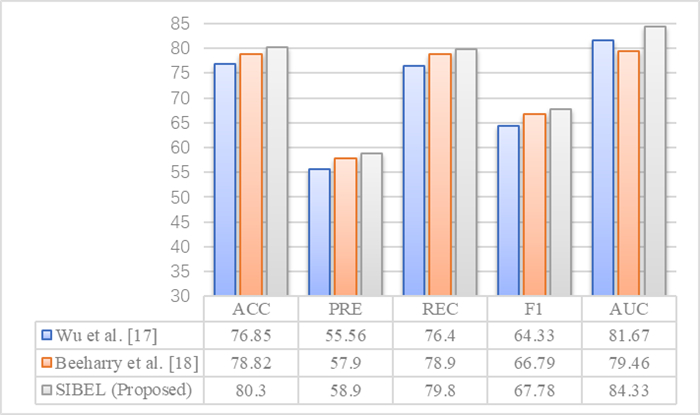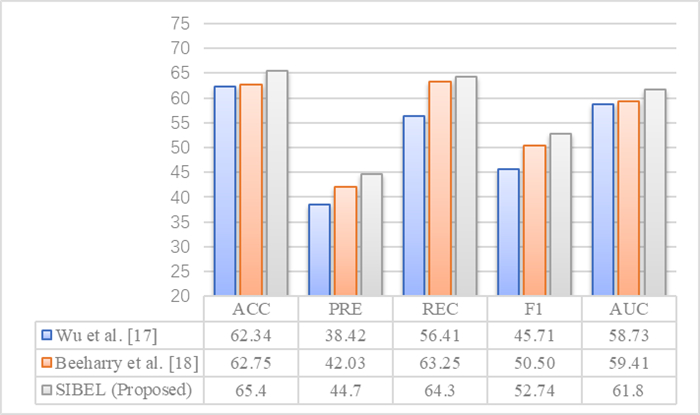1.
Introduction
Antibiotics are the secondary metabolites of certain microorganisms that can selectively inhibit or kill other microorganisms at low concentrations without bringing serious toxicity to the host. Under the action of antibiotics, a large number of sensitive bacteria are inhibited or killed, but a few sensitive bacteria change their metabolic pathways and become resistant bacteria. Repeated application of the same antibiotics results in a screening of resistant bacteria and antibiotics are ineffective once resistant bacteria become dominant, which aggravates the hazard of bacterial infection to human health [1]. Therefore, many scholars have invested their energy in studying bacterial resistance [2,3,4,5,6,7,8,9,10]. In Reference [2], Austin and Anderson formulated a model to describe the transmission dynamics of resistant bacteria between the host and the medical staff. Their study aimed to reveal the necessity of strengthening clinical management of patients infected with bacteria. In Reference [3], Blair and Webber expounded the molecular mechanisms of bacterial resistance including intrinsic resistance and acquired resistance. In Reference [6], authors assumed that bacterial resistance is acquired by genetic mutation and plasmid transfer and formulated a population dynamic model of sensitive and resistant bacteria to antibiotics. The stability of the coexistence equilibrium and the existence of the limit cycle is discussed. In Reference [10], the author formulated the following model to investigate the dynamic changes of bacterial resistance in a single bacterial population that is exposed to a single antibiotic:
where x(t) and y(t) are two distinct populations of the same species of disease-causing bacteria. x(t) denotes the density of sensitive bacteria in the bacterial population and y(t) denotes the density of resistant bacteria in the bacterial population. α is the growth rate of the two kinds of bacteria. In view of limited nutrients in the host, struggle for survival between the two kinds of bacteria will cause them to be sifted out at a rate of β. γ is the antimicrobial ability, which is larger for bactericidal antibiotics compared to bacteriostatic antibiotics. η is the antibiotic concentration. δ is the conversion rate of resistant bacteria losing resistance and converting into sensitive bacteria. All the above parameters are positive constants. By qualitative analysis, Garber gave the conditions under which resistant bacteria will go to extinction.
How to optimize the antibiotic treatment measures is a topic that mathematicians have been interested in for a long time [11,12,13,14,15,16,17,18]. In Reference [11], authors introduced the impulsive state feedback control into the system (1.1) and then got the following system:
The orbital stability of the order-1 periodic solution is presented. It can be seen that the density of resistant bacteria is limited to a lower level in the system with impulsive state feedback control. In Reference [14], the authors formulated a model to simulate the contribution of antibiotics and immune system to combat bacterial infection and then propounded an optimal control problem. The optimal control is found by applying Pontryagins Maximum Principle. In reference [17], the authors mainly focused on the two subpopulations of the same species. One subpopulation has an intrinsic resistance to drugs and the other one is sensitive to drugs. The authors formulated a nonlinear objective function to achieve the following two goals: (i) minimize the size of the bacterial population, (ii) prevent resistant bacteria from becoming dominant. The results indicate that the optimal control contains a singular interval.
Currently, impulsive state feedback control has been widely applied in various fields such as biology, medicine, etc. [19,20,21,22]. Meanwhile, the study of the periodic solution has made many new advances [23,24,25,26,27,28,29,30]. In Reference [19], authors established a crop pest management model with impulsive state feedback control. It can be known that observations and records of the pest quantity at different stages of crops can help to control the size of the pest population. In Reference [25], authors reviewed the research results of the periodic solution since 2010 and presented the recent research results.
This paper is organized as follows: In Section 2, we formulate a model of conversion between sensitive and resistant bacteria and then introduce impulsive state feedback control to optimize antibiotic treatment measures. In Section 3, the global asymptotic stability of the positive equilibrium is discussed. In Section 4, the orbital stability of the order-1 periodic solution is proved. In Section 5, the numerical simulation is used to confirm our results.
2.
Model description and preliminaries
Motivated by [10], the conversion rate of resistant bacteria losing resistance and converting into sensitive bacteria is represented by δyk+y. We can obtain limy→+∞δyk+y=δ, which shows that as the density of resistant bacteria increases, the conversion rate of resistant bacteria losing resistance and converting into sensitive bacteria increases and gradually tends towards δ. We give the following system:
where x(t) and y(t) are two distinct populations of the same species of disease-causing bacteria. x(t) denotes the density of sensitive bacteria in the bacterial population and y(t) denotes the density of resistant bacteria in the bacterial population. α is the growth rate of the two kinds of bacteria. In view of limited nutrients in the host, struggle for survival between the two kinds of bacteria will cause them to be sifted out at a rate of β. γ is the antimicrobial ability, which is larger for bactericidal antibiotics compared to bacteriostatic antibiotics. η is the antibiotic concentration. All the above parameters are positive constants.
Severe bacterial infection can endanger life. Clinically, antibiotics are commonly used to inhibit or kill disease-causing bacteria. However, prolonged administration of the same antibiotics can cause bacterial resistance, which, in turn, makes the antibiotic effect worse and even disappear. We can use other antibiotics when one antibiotic loses its effectiveness, but bacteria still become resistant to new antibiotics after long-term use. Thus, replacing antibiotics doesn't fundamentally reduce bacterial resistance. We need to optimize the antibiotic treatment measures to extend or restore the antibiotic effectiveness. Inspired by [11,12], we introduce the impulsive state feedback control into the system (2.1) and then get the following system:
where h is the critical threshold value of resistant bacteria at which antibiotics lose best treatment for patients. When the density of resistant bacteria reaches the critical threshold value h, θ multiples of resistant bacteria become sensitive bacteria under the impulsive effect (0<θ<1).
For convenience, we give the following definitions and theorems.
Definition 2.1 [25] Consider a two dimensional state dependent impulsive differential equation
Suppose the impulsive set M and phase set N of system (2.3) fall between two parallel lines, the intersection of y-axis with the phase set N line is F. Due to the pulse effect, any trajectory starting from N reaches the impulsive set M and then is mapped to I∈N. Then the point I is called the successor point of the point G and g(G)=|FI|−|FG| is called the successor function of the point G, where |FI|, |FG| are the distance between the point F and the point I and between the point F and the point G, respectively.
Theorem 2.1 [25] The successor function g is continuous.
Theorem 2.2 [25] Assume ^n1n2⋃¯n1n2 is an order-1 cycle and the point m is the successor point of e. According to the position between the points n1, e and m, the order-1 periodic solution is classified into three types:
1) Type 1: the order-1 cycle ^n1n2⋃¯n1n2 is convex, and the points e and m are at the same side of n1 as shown in Figure 1(a).
2) Type 2: the order-1 cycle ^n1n2⋃¯n1n2 is not convex, yet the points e and m are at the same side of n1 as shown in Figure 1(b).
3) Type 3: the points e and m are at different sides of n1 as shown in Figure 1(c).
Theorem 2.3 [25] If Γ is a type 1 order-1 periodic solution with period T and the integral along Γ satisfies
Γ is orbital stable.
Theorem 2.4 [25] If Γ is a type 1 order-1 periodic solution and the region that contains Γ satisfies
Γ is orbital stable.
3.
Qualitative analysis of the system (2.2) without the impulsive effect
Without the impulsive effect, the system (2.2) is reduced to
3.1. Boundedness
Theorem 3.1. The system (3.1) is uniformly bounded in the first quadrant.
Proof. The positive x-axis is either a single trajectory or a combination of an equilibrium point and two trajectories. However, both cases imply that no trajectory intersects with the positive x-axis.
Obviously, dxdt|x=0=δyk+y>0 holds for y>0, which shows that when meeting the positive y-axis, the trajectory will pass through it from left to right (see Figure 2).
By investigating the straight line l≜x+y−αβ=0, we can obtain
for x>0, which indicates that when meeting the straight line l=0 in the first quadrant, the trajectory will pass through it from upper right to lower left (see Figure 2).
From the above, we can see that the system (3.1) is uniformly bounded in the first quadrant.
The proof is completed. □
3.2. Existence of equilibria
The equilibria of the system (3.1) are given by
From the second equation of (3.2), we can obtain y=0 or x=αβ−δβ(k+y)−y. By substituting y=0 in the first equation of (3.2), we can obtain x=0 or x=α−γηβ, so the equilibrium E0(0,0) always exists and the equilibrium E1(α−γηβ,0) exists if α>γη holds.
By substituting x=αβ−δβ(k+y)−y in the first equation of (3.2), we can obtain
where
Theorem 3.2. If βk2>αk>δ and γηk>δ hold, the system (3.1) has a unique positive equilibrium.
Proof. Suppose y1,y2,y3 are three roots of Φ(y)=0 defined in (3.3) in the complex number field. According to the Vieta theorem, we can obtain
If βk2>αk>δ and γηk>δ hold, we can obtain
Thus, Φ(y)=0 defined in (3.3) has one positive real root and two complex roots with negative real parts. Hence, Φ(y)=0 defined in (3.3) has a unique positive real root. Consequently, the system (3.1) has a unique positive equilibrium.
The proof is completed. □
3.3. Stability of equilibria
The Jacobian matrix of the system (3.1) is
Theorem 3.3. If min{γη,δk}>α holds, the equilibrium E0(0,0) is a stable node. If max{γη,δk}>α>min{γη,δk} holds, the equilibrium E0(0,0) is a saddle point. If α>max{γη,δk} holds, then the equilibrium E0(0,0) is an unstable node.
Proof. The Jacobian matrix at the equilibrium E0(0,0) is
The eigenvalues of J(E0(0,0)) are
If min{γη,δk}>α holds, we can obtain λ1<0, λ2<0. Thus, the equilibrium E0(0,0) is a stable node. If max{γη,δk}>α>min{γη,δk} holds, we can obtain λ1>0, λ2<0 or λ1<0, λ2>0. Hence, the equilibrium E0(0,0) is a saddle point. If α>max{γη,δk} holds, we can obtain λ1>0, λ2>0. Therefore, the equilibrium E0(0,0) is an unstable node.
The proof is completed. □
Theorem 3.4. If min{α,δk}>γη holds, the equilibrium E1(α−γηβ,0) is a stable node. If α>γη>δk holds, the equilibrium E1(α−γηβ,0) is a saddle point.
Proof. The Jacobian matrix at the equilibrium E1(α−γηβ,0) is
The eigenvalues of J(E1(α−γηβ,0)) are
If min{α,δk}>γη holds, we can obtain λ1<0, λ2<0. Hence, the equilibrium E1(α−γηβ,0) is a stable node. If α>γη>δk holds, we can obtain λ1<0, λ2>0. Therefore, the equilibrium E1(α−γηβ,0) is a saddle point.
The proof is completed. □
Theorem 3.5. If βk2>αk>δ and γηk>δ hold, the unique positive equilibrium E∗(x∗,y∗) is globally asymptotically stable.
Proof. The Jacobian matrix at the positive equilibrium E∗(x∗,y∗) is
Combined with x∗=αβ−δβ(k+y∗)−y∗, we can obtain
If βk2>αk>δ and γηk>δ hold, we can obtain
and
Therefore, the unique positive equilibrium E∗(x∗,y∗) is locally asymptotically stable.
Define a Dulac function D(x,y)=1xy and we can obtain
which implies that there is no limit cycle in the first quadrant. Consequently, the unique positive equilibrium E∗(x∗,y∗) is globally asymptotically stable.
The proof is completed. □
4.
The order-1 periodic solution of the system (2.2)
4.1. Existence and uniqueness of the order-1 periodic solution
Theorem 4.1. When h<y∗, the system (2.2) has a unique order-1 periodic solution.
Proof. From the system (2.2), we can obtain the impulsive set M={(x,y)∈R2+|x≥0,y=h} and the phase set N={(x,y)∈R2+|x≥θh,y=(1−θ)h}. When h<y∗, both the impulsive set M and the phase set N are below the positive equilibrium E∗(x∗,y∗).
Now, we will prove the existence of the order-1 periodic solution. Suppose the straight line y=(1−θ)h intersects with isoclines dxdt=0 and dydt=0 at points R and S, respectively (see Figure 3(a)). The trajectory initiating from the point R(xR,(1−θ)h) intersects with the impulsive set M at the point RM and then the point RM is mapped to RN(xRN,(1−θ)h) due to the impulsive effect. The point RN is the successor point of the point R. The point RN must be on the right of the point R according to the property of the vector field, and therefore the successor function satisfies
Similarly, the trajectory initiating from the point S(xS,(1−θ)h) reaches the impulsive set M at the point SM and then the point SM jumps to SN(xSN,(1−θ)h) due to the impulsive effect. The point SN is the successor point of the point S. The point SN must be on the left of the point S according to the property of the vector field, and hence the successor function satisfies
Following the continuity of the successor function, there must be a point W between R and S that makes g(W)=0 hold. The trajectory initiating from the point W hits the impulsive set M at the point WM and then the point WM is mapped back to W itself due to the impulsive effect. In consequence, the system (2.2) has an order-1 periodic solution.
Next, we will prove the uniqueness of the order-1 periodic solution. We arbitrarily choose two points T and U in the phase set N where xT<xU (see Figure 3(b)). The trajectory initiating from the point T reaches the impulsive set M at the point TM and then the point TM jumps to TN due to the impulsive effect. The point TN is the successor point of the point T. Similarly, the trajectory initiating from the point U intersects with the impulsive set M at the point UM and then the point UM is mapped to UN due to the impulsive effect. The point UN is the successor point of the point U. Since xU−xT>xUM−xTM and xUM−xTM=xUN−xTN hold, we can obtain xU−xT>xUN−xTN. Hence the successor function satisfies
Hence, the successor function g is monotonically decreasing in the phase set N. Therefore, there must be only one point W that makes g(W)=0 hold. In consequence, the system (2.2) has a unique order-1 periodic solution.
The proof is completed. □
4.2. Stability of the order-1 periodic solution
Theorem 4.2. When h<y∗, the unique order-1 periodic solution of the system (2.2) is orbital stable.
Proof. From Figure 3(a) and Theorem 2.2, we can conclude that the order-1 periodic solution of the system (2.2) is a type 1 order-1 periodic solution. Define a Dulac function D(x,y)=1xy and the stability of the order-1 periodic solution of the system (2.2) can be decided by the system:
We can obtain
According to Theorem 2.4, we can know that the unique order-1 periodic solution of the system (2.2) is orbital stable.
The proof is completed. □
4.3. Numerical simulation and discussion
Let parameters α=2, β=0.8, γ=0.3, η=0.9, δ=1, k=4 and parameters α=2, β=0.8, γ=0.3, η=3, δ=1, k=4. Both cases satisfy the conditions of Theorem 3.5, and therefore the unique positive equilibrium E∗(x∗,y∗) is globally asymptotically stable in both cases. The numerical simulation is used to confirm the result (see Figures 4 and 5). We get the positive equilibrium E∗(x∗,y∗)=(1.898,0.312) for η=0.9, which is simulated in Figure 4. With the increase in the antibiotic concentration, we get the positive equilibrium E∗(x∗,y∗)=(0.434,1.852) for η=3, which is simulated in Figure 5. It can be seen that the density of resistant bacteria increases as the antibiotic concentration increases. This means that prolonged administration of the same antibiotics can cause bacterial resistance, which, in turn, makes the antibiotic effect worse and even disappear.
Antibiotics play a vital role in the fight between humans and disease-causing bacteria, so we need to optimize the antibiotic treatment measures to extend or restore the antibiotic effectiveness. In this paper, we formulate a simplified model of conversion between sensitive and resistant bacteria with the impulsive state feedback control. Let parameters α=2, β=0.8, γ=0.3, η=3, δ=1, k=4, h=0.4, θ=0.9. This case satisfies the conditions of Theorem 3.5 and Theorem 4.1, and therefore the unique order-1 periodic solution of the system (2.2) is orbital stable in this case. The numerical simulation is used to confirm the result (see Figure 6). It can be seen that there is an oscillation of the density of resistant bacteria in an interval below the critical threshold value when the impulsive state feedback control is adopted. This strongly shows that the impulsive state feedback control can reduce bacterial resistance.
Use of AI tools declaration
The authors declare they have not used Artificial Intelligence (AI) tools in the creation of this article.
Acknowledgments
This work is supported by the National Natural Science Foundation of China (No.12171193 and 12271346), the project of the Distinguished Professor of colleges and universities of Henan province in 2019 and Project of Foreign expert in Henan (HNGD2023074).
Conflict of interest
The authors declare that they have no conflict of interest in the manuscript.










 DownLoad:
DownLoad:








